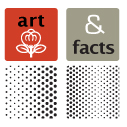Entrepreneurs Wear Many Hats… But They Don’t Have To
Recently, a friend asked me if I wanted to help promote their suite of iphone apps. At first I didn’t think it was a project I should take on since I’m not an iphone marketing expert, and too, I’m juggling redesigning my analysis software for mobile devises while doing graphic and information design gigs.
Before making a commitment to my friend’s project, I decided to research the iphone app market by focusing on one of his goals – how to get a million downloads. Although it’ll be good information for me to learn for my own project, should I take the time to research this now – before I’m done developing my own app? Yes, and here’s why:
As an entrepreneur that is both artistic and geeky, I’m experienced in the entire gamut of the product development cycle: from defining the technical specs, devising collaborative business partner plans, organizing production schedules and budgets, creating a look and feel, building out interfaces, to launch and testing.
However, in the past, when it came to transitioning my own projects from production to implementing marketing and business strategies, I was challenged with two main issues: switching gears and changing perspectives.
It’s challenging to switch gears from the quietude of creativity and production to the hustle and bustle of networking and promotions — especially for those that have been working in solitude. Marketing and business development requires another knowledge set and people skills that are either rusty or none existent for artistic/creative and programming/engineering types. You have to be ready to step out of the stillness and into a flurry of meetings that takes you away from refining your product. It’s tough working both modes at the same time.
Changing perspectives from developing a vision to selling the vision, it’s yet another reality check. If prior or during the development of your product, you haven’t done some business or marketing analysis (identifying market sales and competitor’s promotional strategies), you’ll either discover your product has great sales and marketing potential or not. Innovation will get you half way there; pragmatism will push you to the finish line.
Based on my past lessons and my present story, my two cents:
If you’re developing the product yourself, find a marketing / business development partner that you like and trust; you need a fresh perspective that can handle the details and extra work. Just as my friend did, he asked me to promote their suite of iphone apps.
Or, educate yourself about the general landscape for business development and marketing – it’ll help refine and further your vision, while also prepares you when you’re looking for the right partner to execute marketing strategies.
Researching for a couple of weeks on the iphone market has provided me with some new founded ideas on how to design and market my mobile application, and too, I’ve got a few insights that might be helpful to my friend (and other mobile app developers). Click here to read “A Million Downloads of Your iphone App – Is it Possible?”





